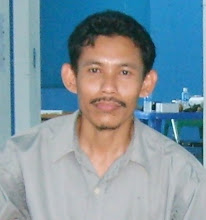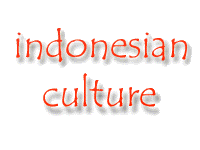
Calling tattoo art, there are many tribe at Archipelago that have this tradition as tribal as Dayak, Mentawai, and Papuan. But, elongated ear tradition, just tribe Dayak at Kalimantan who have unique tradition and typical it. That even not all Dayak's tribe, but just a few Dayak's tribe sub one particular.
Even as one of individuality or id that really stands out as Kalimantan's aborigin, but this tradition is present just progressively been left. If even available one withstands, just plays favorites old generation faction little Dayak that old above 60 years.
Besides amount it by one whit, they that its eared origin elongated witting truncate their auricle. Reason that frequent being interposed, outmodel reputed fear or worried their child falt cheap.
According to anthropologist Mering Ngo, one that also indigenous Dayak's tribe, if Dayak's traditional tattoo is now amends become modern tattoo art, elongated ear tradition just getting sinking and is left. No present the rising generation that keep on this tradition, even at Kalimantan's back country even if, with motive medley.
"Adequately I just that its ear made by length. Child seventh me, one even no that its ear made by length," Pejung's speech (82), Dayak Kayan's tribal citizen that its ear made by length until about 15 centimetres.
"I am pity if my children its following shame and as jeer material. Eventually, elongated ear shall begin to do since is still baby," add Pejung.
According to Mering Ngo, besides no router to keep up elongated ear tradition, not also all group or subsuku Dayak at Kalimantan has elongated ear tradition this. At Kalimantan West, e.g., elongated ear tradition just is known for example among Dayak Iban's society, Kayan, Garden, and Dayak Punan. This tradition even most just applies at back country as at Kapuas's Regency Upstream.
Elongated ear makings not only been done on female, but also on male. Elongated ear makings usually been done since is still baby. There is aim even it, according to Mering Ngo, concerned by social strata classification someone in society.
At Dayak Kayan, e.g., elongated ear makings point out that person is indigenous ducal circle.
There is makings even elongated ear on female points out she one noble at a swoop to differentiate with female that made by slave because martial defeat or can't pay book debt.
Any other again with upriver River village Mahakam. Elongated ear to be utilized as id to point out someone age. So baby comes into the world, ear tip given by bead that adequately heavy. Each year, total bead that sticks at crescent ear one.
"In consequence, if wants to know someone age, can be seen of total bead that sticks at ear. If its amount 60, therefore age it must 60 year since bead assemblies can't be done rampant, but one year once," Jacobus Bayau Lung's revealing, Chairman II. Dayak Kalimantan's partnership East.
To the effect elongated ear makings even is not to point out nobility state, but just to coach patient. "Just imagine, just how weight pending bead it at ear. But, since is used everyday, patient and their grief taste becomes practiced," say Bayau Lung.
In the meantime, among Dayak Kayan's society, that auricle becomes length, usually auricle was given by ballast as metal as gets bangle circle form or get pocket edition whirligig form. With this ballast auricle will go on memanjang until some centimetre.
While on Dayak Iban, be not been given such ballast, but just is let appear to be big hole as if we make zero number with band thumb tip with index finger tip.
At Utik's River Orchard, Apan's village, Embaloh's district Upstream, Kapuas's regency Upstream, e.g., found a Dayak Iban named Tuba.
68 surrounding old oldster that year memanjangkan its ear about year 60 an while go abroad to Sarawak and Darussalam's Bruneis. Over there her besides memanjangkan ear also make tattoo at sectioned jugular, arm and thigh.
Univeritas Tanjungpura Prof Dr's Common Law professor Cyprianus Thambun Anyang's Johns declares for, elongated ear tradition Dayak Iban as almost equal to Dayak Garden that withholds ballast.
"On Dayak Garden, elongated ear tradition that don't relate with given social strata. This tradition in particular for female just as keperempuanannya's id," commons law expert flat this.
But, say Thambun, this tradition was left Dayak's society Garden. "My mother is even just just after comes to Pontianak that time asks for to be truncated its auricle because worried its children following shy," its revealing.
According to Thambun, memanjangkan is ear only one of tradition decorates body. Dayak's tribal tradition another is make tattoo and put together gold tooth. But, of drd tradition decorates that body, just tattoo that stills to withstand although progressively loses spiritualnya's meaning. Meanwhile makes length ear and put together gold tooth be left.
"Tradition assembles to fill teeth gold for Dayak Garden to point out pertinent one have gone abroad far, because gold tooth that nicely only is at Sarawak and Darussalam's Brunei," its speech.
Begin when elongated ear tradition this was left?
According to Mering, this unknown a hair's breadth, but is estimated equal to tattoo tradition while begins its input missionaries go to back country at Dayak's gathering place on Dutch colonial epoch before.
This tradition even progressively abrades is gone while confrontation happening among Indonesian and Malaysian at Kalimantan's borderland. stigma's effloresce that time at society, they who get length auricle and stay behind on the house length, one that is dwelt family divers, constituting society group that don't modern. Don't bate to such a view, finally umpteen citizen cuts its length ear.
Stigma this kind of goes on until now. Dayak's the rising generation circle not wants again make length ear for fear reputed outmodel and not modern.
Just plays favorites Dayak's society little that is still hold tradition firmness gets length auricle, and it is amount even it so minim. (M SYAIFULLAH / TRY HARIJONO)
 Balinese religion is based on respect for and worship of God and ancestors, and is a combination of Hindu elements and indigenous Balinese culture. After death, the body must be dissolved and returned to its original elements. The cremation ritual is a purification rite which frees the roh (soul or spirit) from its temporary earthly house and facilitates its journey to its next existence.
Balinese religion is based on respect for and worship of God and ancestors, and is a combination of Hindu elements and indigenous Balinese culture. After death, the body must be dissolved and returned to its original elements. The cremation ritual is a purification rite which frees the roh (soul or spirit) from its temporary earthly house and facilitates its journey to its next existence. 










![---::[Kemayuku]::---](http://i307.photobucket.com/albums/nn310/ongoz/lr7.gif)











